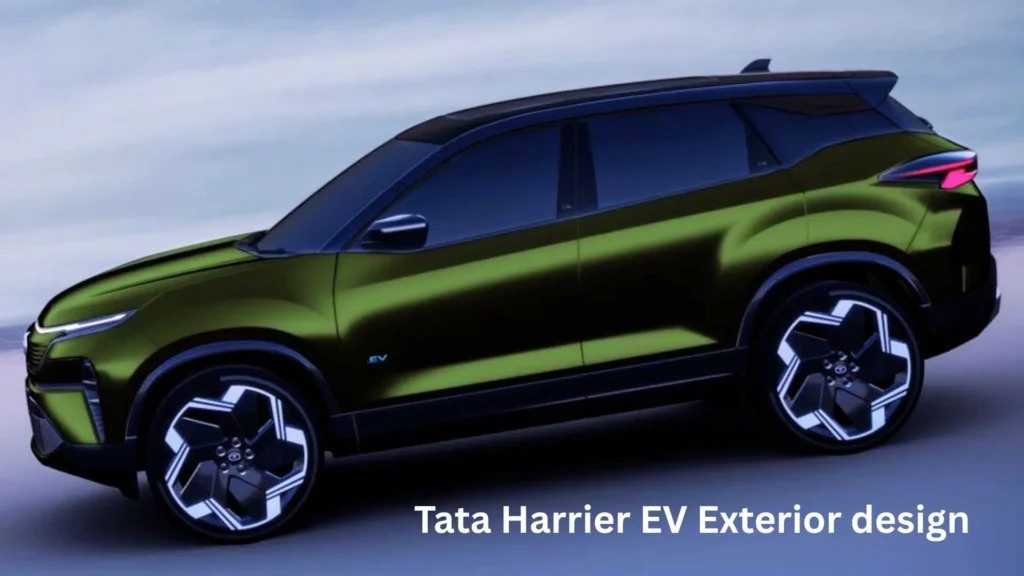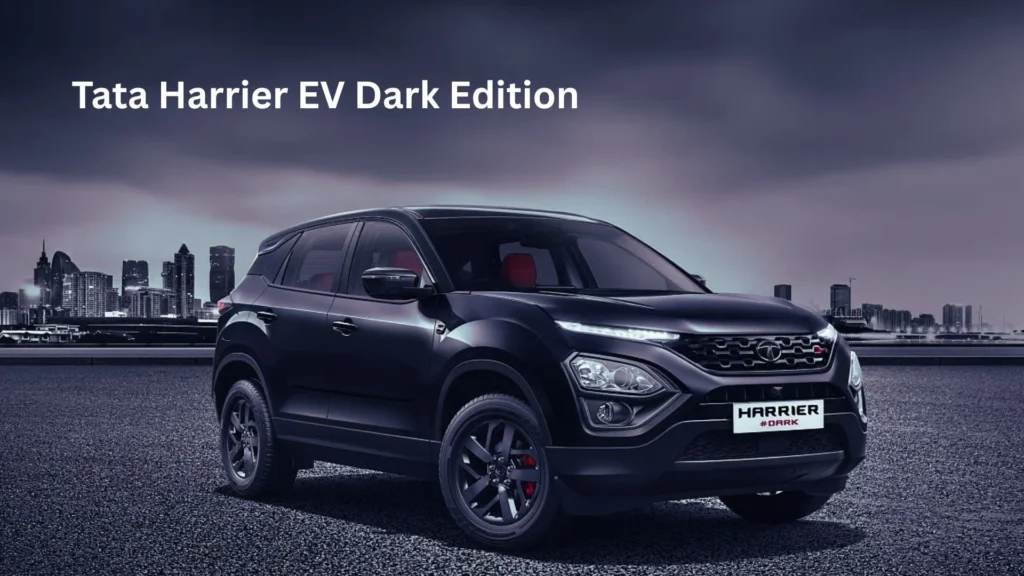Key Takeaways
- Tata Harrier EV launch in India is set for June 3, 2025, with an estimated price range of ₹24–30 lakh, positioning it as a premium electric SUV.
- Offers a claimed range of 500 km and a quad-wheel-drive (QWD) system for enhanced performance.
- Features advanced tech like a 12.3-inch touchscreen, ADAS suite, and vehicle-to-vehicle (V2V) charging.
- Challenges the Hyundai Creta Electric, BYD Atto 3, and Mahindra XEV 9e in India’s fast-evolving EV market.
- Built on Tata’s Gen 2 acti.ev architecture, blending style, safety, and sustainability.
Tata Harrier EV Launch in India: A Game-Changer in Electric SUVs
Imagine cruising through the vibrant streets of Mumbai or tackling the rugged terrains of the Western Ghats, all while leaving zero carbon footprints. The Tata Harrier EV, set to launch in India on June 3, 2025, promises to make this dream a reality. With its sleek design, cutting-edge technology, and eco-friendly performance, this electric SUV is poised to redefine the premium electric vehicle segment in India. However, in a saturated market, what distinguishes the Tata Harrier EV? Let’s dive into its features, specifications, price range, and why it’s generating so much buzz.
The Indian automotive landscape is undergoing a seismic shift toward electric vehicles (EVs), driven by rising fuel costs, environmental consciousness, and government incentives. With the Harrier EV, Tata Motors, a leader in India’s EV revolution, is prepared to step up its game. This flagship electric SUV, which was unveiled at the Bharat Mobility Global Expo 2025, blends cutting-edge electric capabilities with the tough appeal of its internal combustion engine (ICE) cousin. Whether you’re an EV enthusiast or a curious buyer, here’s everything you need to know about the Tata Harrier EV launch in India.
Why the Tata Harrier EV Matters
The Tata Harrier EV isn’t just another electric vehicle—it’s a bold statement from Tata Motors, which commands a 70% share of India’s EV passenger vehicle market. With competitors like Mahindra XEV 9e, BYD Atto 3, and Hyundai Creta Electric heating up the segment, the Harrier EV aims to carve its niche with a blend of style, performance, and advanced technology.
The anticipation for the Tata Harrier EV launch in India is palpable, with social media platforms like X buzzing with excitement. Posts from enthusiasts highlight its sleek design and all-wheel-drive (AWD) capabilities, with some even calling it the “King of EVs” for its promised 500 km range and robust safety features. But beyond the hype, what can buyers expect from this electric beast? Let’s break it down.
Design: Familiar Yet Futuristic
Exterior Styling That Turns Heads

At first glance, the Tata Harrier EV looks strikingly similar to its diesel-powered sibling, but a closer look reveals EV-specific tweaks that scream modernity. The front grille is sealed off, a hallmark of electric vehicles designed to boost aerodynamics. The redesigned air dam and updated skid plate add a touch of aggression, while aero-optimized turbine blade alloy wheels enhance efficiency without compromising style.
The Harrier EV’s exterior is accentuated by a full-width LED daytime running light (DRL) strip and connected tail lamps, giving it a futuristic edge. A special “Stealth Edition” variant, showcased in matte black at the Auto Expo 2025, adds a bold, premium vibe. The ‘.EV’ badge on the front doors and ‘HARRIER.EV’ lettering on the tailgate clearly distinguish it from its ICE counterpart.
Interestingly, a test mule spotted on the Mumbai-Pune Expressway revealed a charging port on the right fender, mirroring the fuel cap placement of the ICE Harrier. While the patented design includes chunky side cladding and roof-mounted lighting, it’s unclear if these will be standard or optional accessories. In any case, the Harrier EV is guaranteed to stick out in a crowd thanks to its commanding road presence.
Interior: A Tech-Laden Sanctuary
Step inside, and the Tata Harrier EV offers a premium, tech-forward cabin that rivals luxury SUVs. The dashboard maintains the ICE Harrier’s recognizable design while showcasing a clean dual-tone black-and-white palette that reflects Tata’s modern EV look, which is demonstrated in the Nexon EV and Curvv EV. A 12.3-inch touchscreen infotainment system takes center stage, paired with a 10.25-inch fully digital instrument cluster for a seamless digital experience.

Comfort features include ventilated front seats, a panoramic sunroof, dual-zone automatic climate control, and touch-based HVAC controls. The cabin’s spaciousness, derived from the Land Rover D8-based OMEGA architecture, ensures ample room for five passengers. Sustainable materials and ambient lighting strips further elevate the premium feel, making every journey a luxurious escape.
Powertrain and Performance: Power Meets Efficiency
A Robust Electric Heart
The Tata Harrier EV is built on the acti.ev plus architecture, a heavily modified version of the OMEGA platform tailored for electrification. Unlike its ICE counterpart, the Harrier EV introduces a quad-wheel-drive (QWD) system, achieved through a dual-motor setup—one motor on each axle. This makes it the first Tata EV to offer AWD, promising superior traction and handling across diverse terrains.
While exact battery specifications remain under wraps, industry reports suggest two options: a 60 kWh battery for the base model with a single-motor, front-wheel-drive setup, and a larger 75 kWh battery for the AWD variant. Tata claims a real-world range of over 500 km on a single charge, tested under its C75 cycle, making it ideal for both urban commutes and long road trips. The Harrier EV promises a smooth, quiet ride and thrilling acceleration with a peak torque of 500 Nm.
Charging and Efficiency
The Harrier EV supports both standard and fast charging, ensuring convenience for buyers. Features like vehicle-to-load (V2L) and vehicle-to-vehicle (V2V) charging allow owners to power external devices or even charge another EV, adding versatility. Regenerative braking further enhances efficiency, helping maximize the driving range while maintaining a comfortable ride.
Features: Packed with Cutting-Edge Tech
Safety First: A Fortress on Wheels
Safety is a cornerstone of the Tata Harrier EV, building on the ICE Harrier’s 5-star Global NCAP rating. The electric version includes six airbags, ABS with EBD, a 360-degree camera, blind-spot monitoring, and a comprehensive Advanced Driver Assistance System (ADAS) suite. Features like adaptive cruise control, lane-keeping assist, and collision mitigation ensure a secure driving experience.
The robust structure of the Harrier EV, built on the modified Land Rover D8 platform, ensures exceptional crash safety. Additional safety features like a summon function, showcased at the Auto Expo 2025, allow the vehicle to move autonomously to the driver, adding a futuristic touch.
Infotainment and Connectivity
The Harrier EV is a tech lover’s dream, featuring a 12.3-inch touchscreen with smartphone connectivity, navigation, and voice commands. Over-the-air (OTA) updates and cloud-connected telematics keep the system up-to-date, while a premium JBL audio system with five speakers, four tweeters, and a subwoofer delivers an immersive sound experience. A rotary dial for terrain modes and an electronic parking brake further enhance the driving experience.
Price and Variants: What to Expect
The Tata Harrier EV launch in India is expected to bring a price range of ₹24–30 lakh (ex-showroom), depending on the variant and features. Industry sources suggest three variants—Creative, Fearless, and Empowered+—catering to different buyer preferences. The base model may offer a single-motor setup with a 60 kWh battery, while the top-spec variant will likely include the 75 kWh battery, AWD, and premium features like the panoramic sunroof and ADAS suite.

Compared to rivals like the Mahindra XEV 9e (₹29 lakh) and BYD Atto 3 (₹33.99 lakh), the Harrier EV offers competitive pricing for its feature set. However, some X users have expressed concerns about the price, with suggestions that a starting price of ₹19.85 lakh would appeal to a broader audience. Tata’s financing options, including those from Bajaj Finserv, make ownership more accessible through easy EMI plans.
Competitive Landscape: How Does It Stack Up?
The Tata Harrier EV launch in India positions it in a competitive mid-size electric SUV segment. Its primary rivals include:
- Mahindra XEV 9e: Known for its futuristic design and competitive pricing, the XEV 9e offers a similar range but lacks the Harrier EV’s AWD capability.
- BYD Atto 3: A premium option with a 420 km range, it excels in tech but comes at a higher price point.
- Hyundai Creta Electric: Expected to launch in 2025, it targets urban buyers but may not match the Harrier EV’s off-road prowess.
- MG ZS EV: A popular choice, but its 461 km range falls short of the Harrier EV’s claimed 500 km.
Tata’s dominance in India’s EV market, coupled with its extensive charging network (aiming for 400,000 points by 2027), gives the Harrier EV an edge in accessibility and brand trust.
The Road Ahead: Why the Harrier EV Is a Big Deal
The Tata Harrier EV launch in India is more than just a new vehicle—it’s a milestone in Tata Motors’ journey toward a zero-emission future. With over 200,000 EVs sold since the Nexon EV’s launch in 2020, Tata is a leader in India’s electric mobility space. The Harrier EV, alongside the upcoming Sierra EV, strengthens Tata’s portfolio, offering buyers a blend of luxury, performance, and sustainability.
For buyers, the Harrier EV offers a compelling package: a 500 km range, AWD capability, and premium features at a competitive price. Its design, rooted in the iconic Harrier lineage, ensures it appeals to both loyalists and new customers. The Harrier EV is ideally positioned to spearhead the premium SUV market as India’s EV infrastructure expands.
Conclusion
An important turning point in India’s electric mobility history will be the June 3, 2025, debut of the Tata Harrier EV. With its bold design, advanced technology, and eco-friendly performance, it’s more than just an SUV—it’s a vision of a sustainable future. Whether you’re drawn to its 500 km range, quad-wheel-drive system, or luxurious cabin, the Harrier EV promises to deliver an unmatched driving experience. As we move toward a greener tomorrow, the Harrier EV invites us to reimagine what an SUV can be: powerful, stylish, and kind to the planet.


